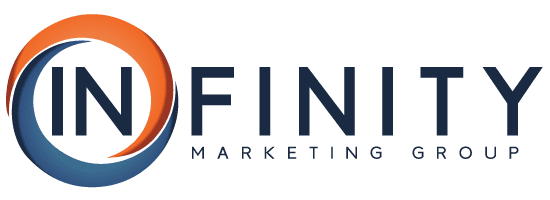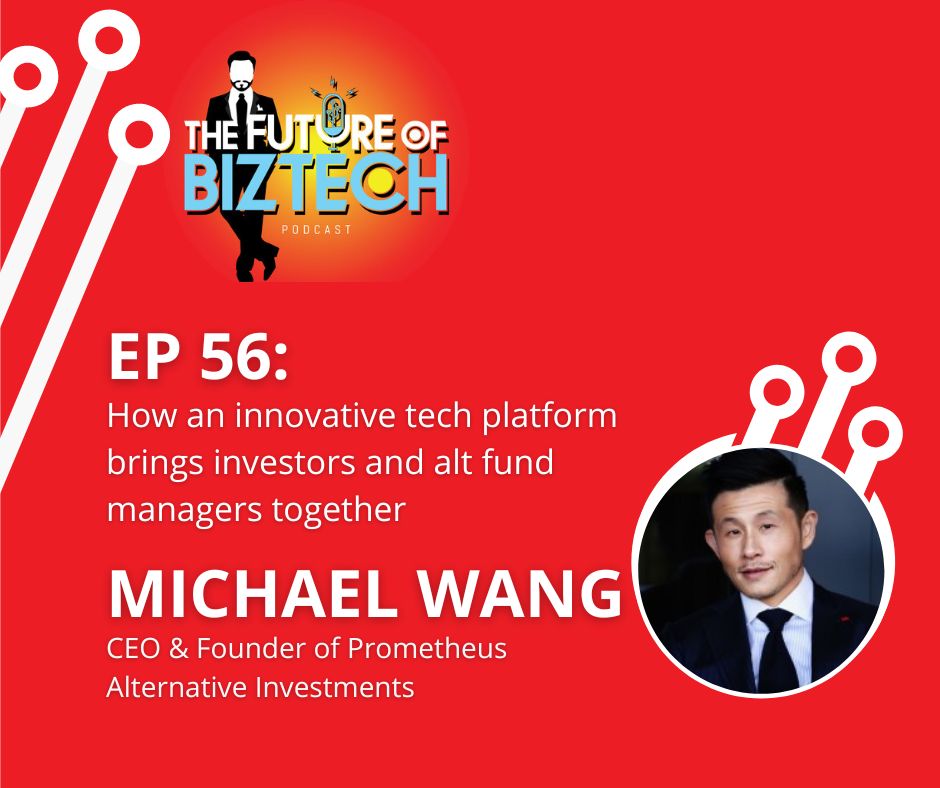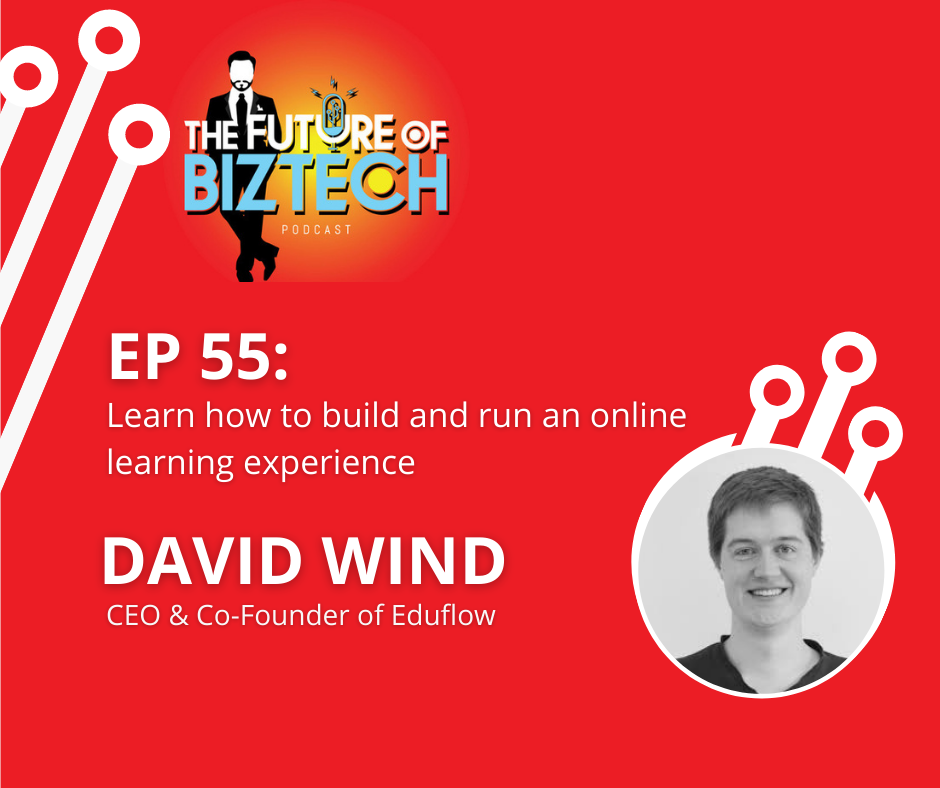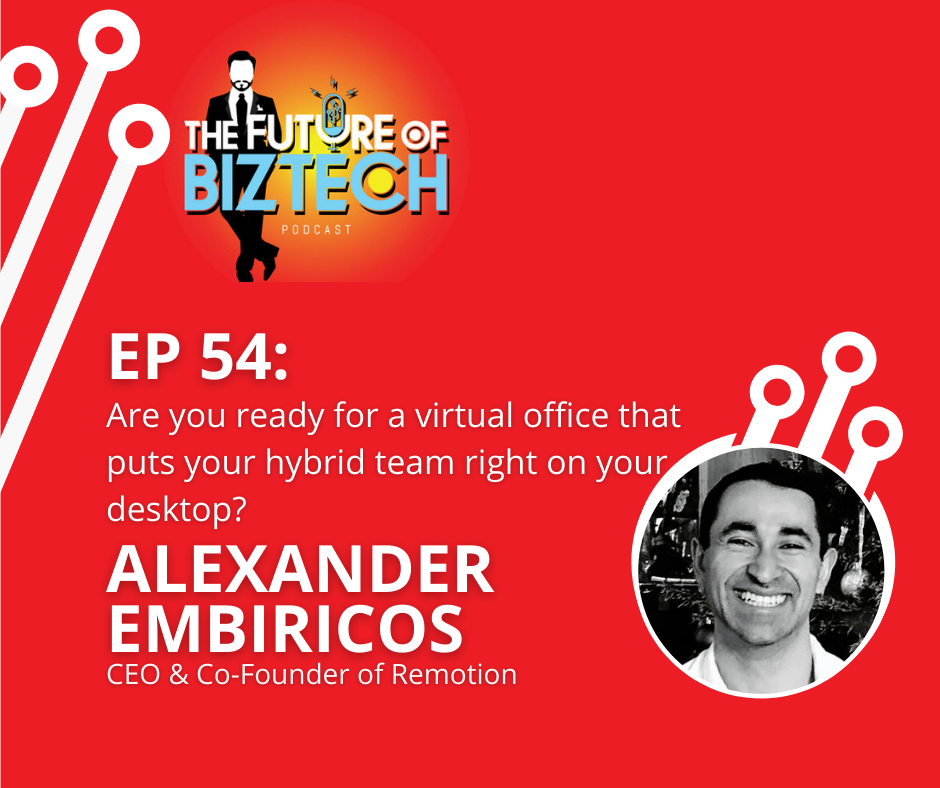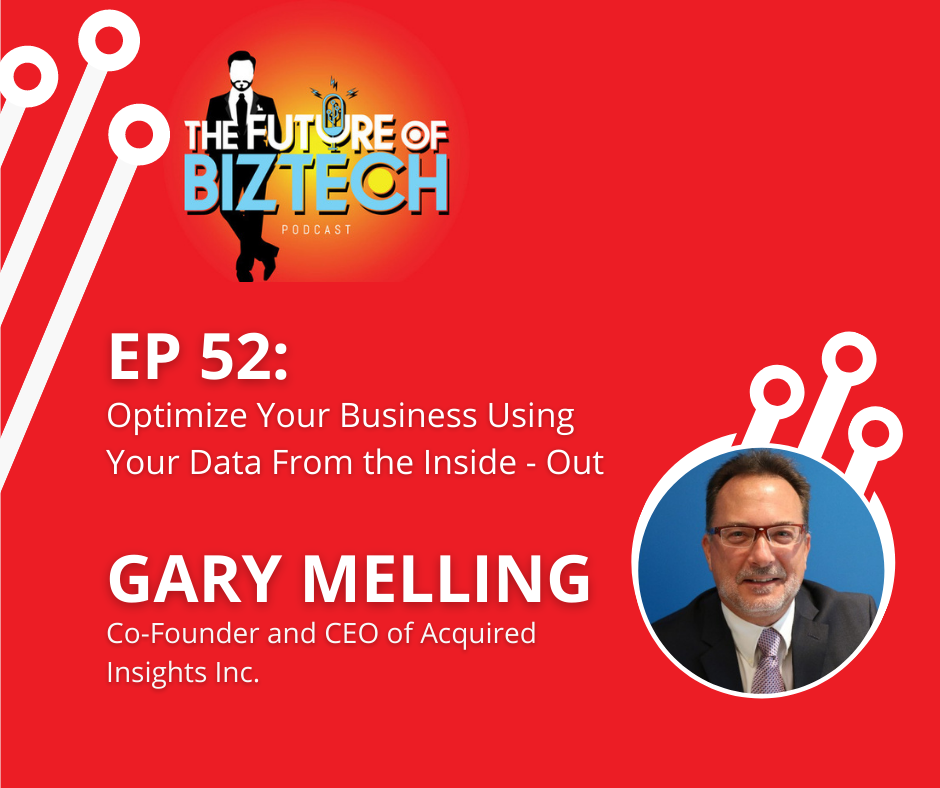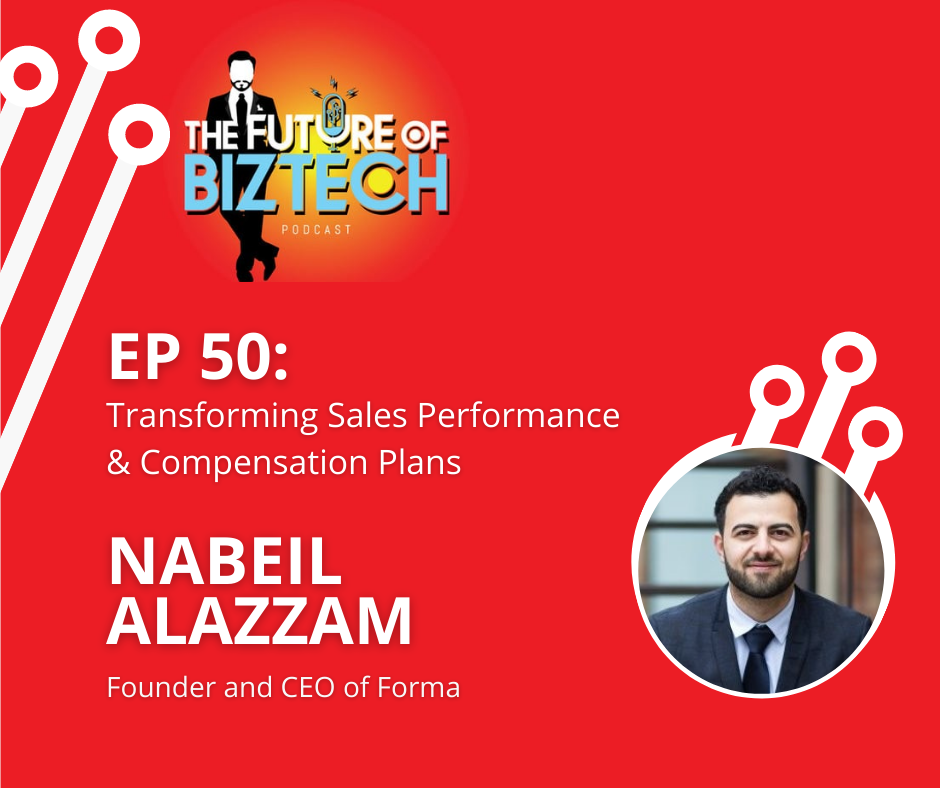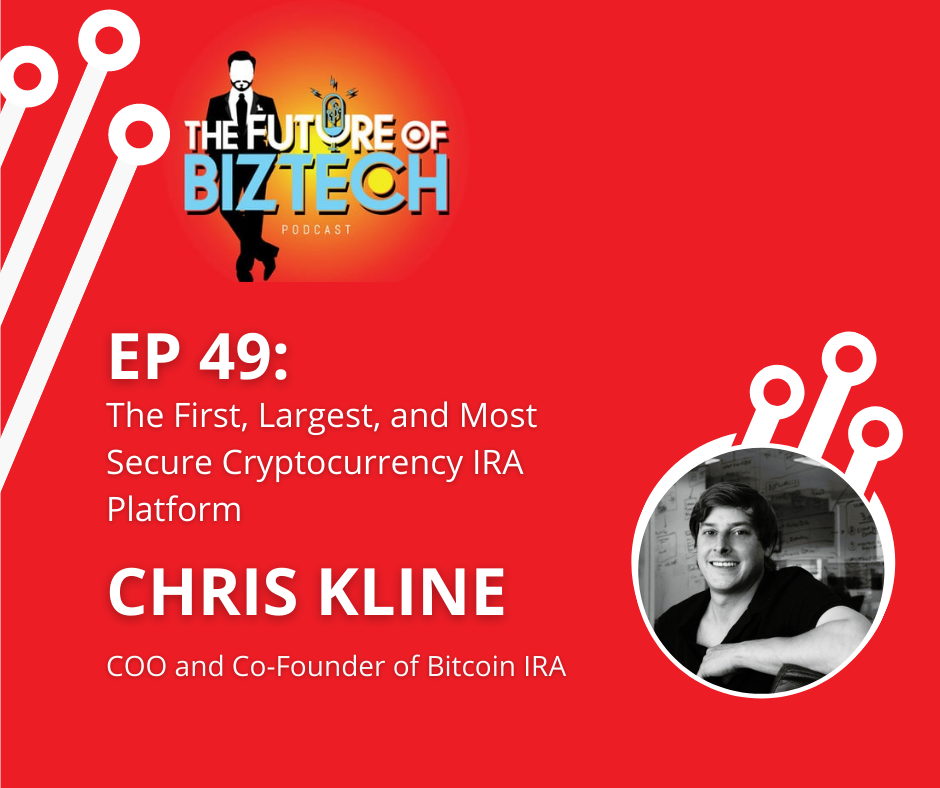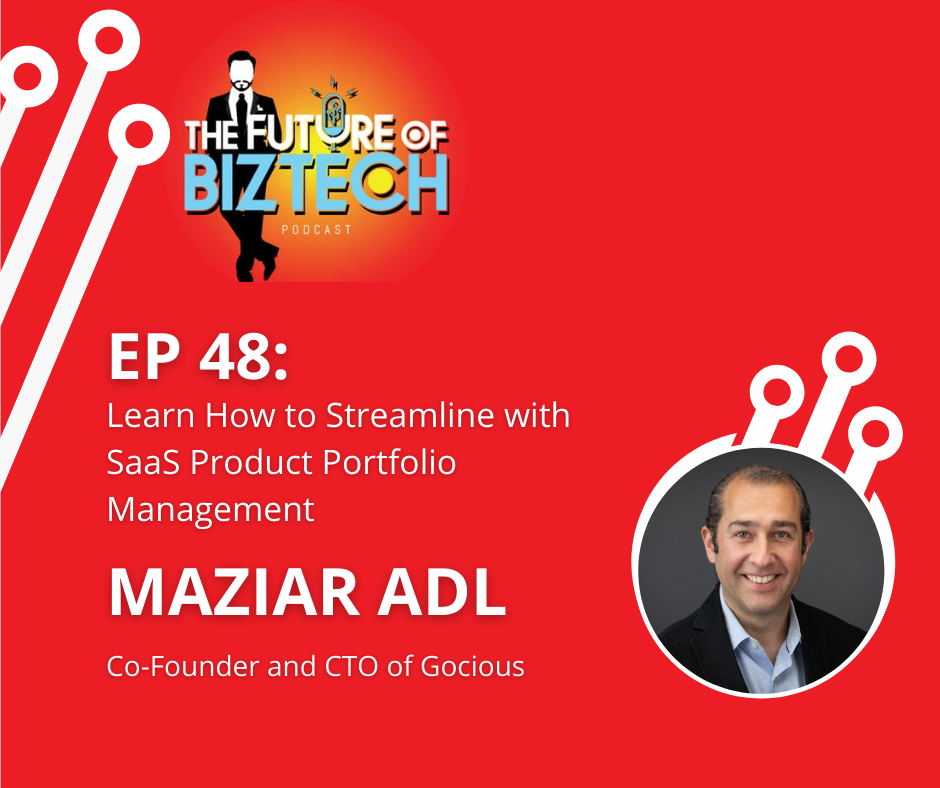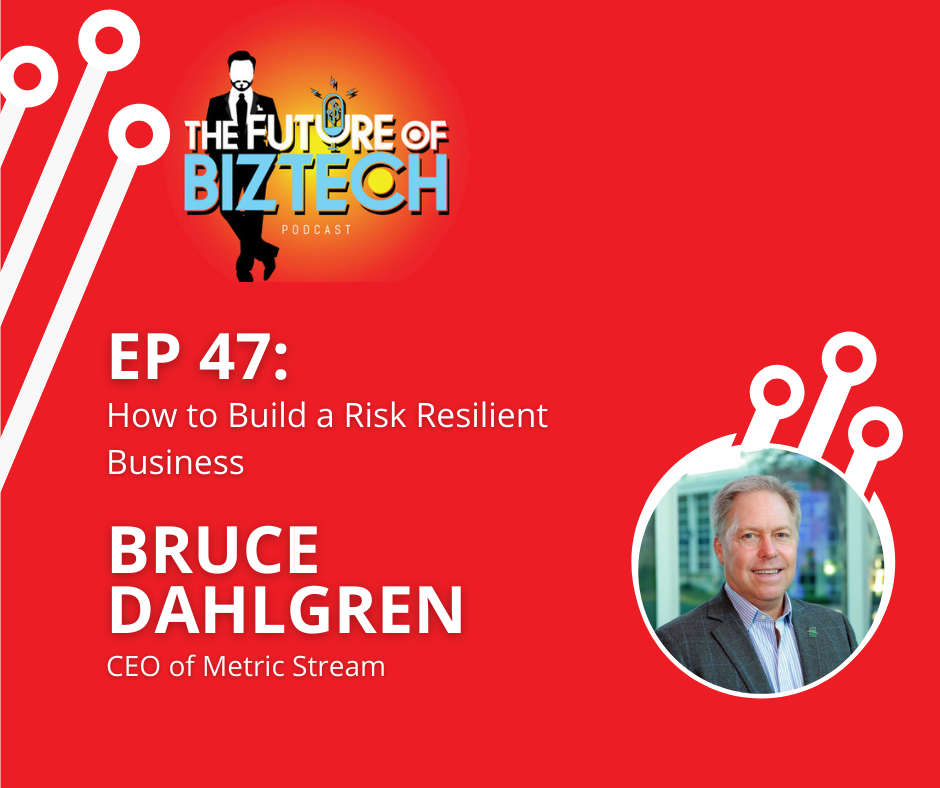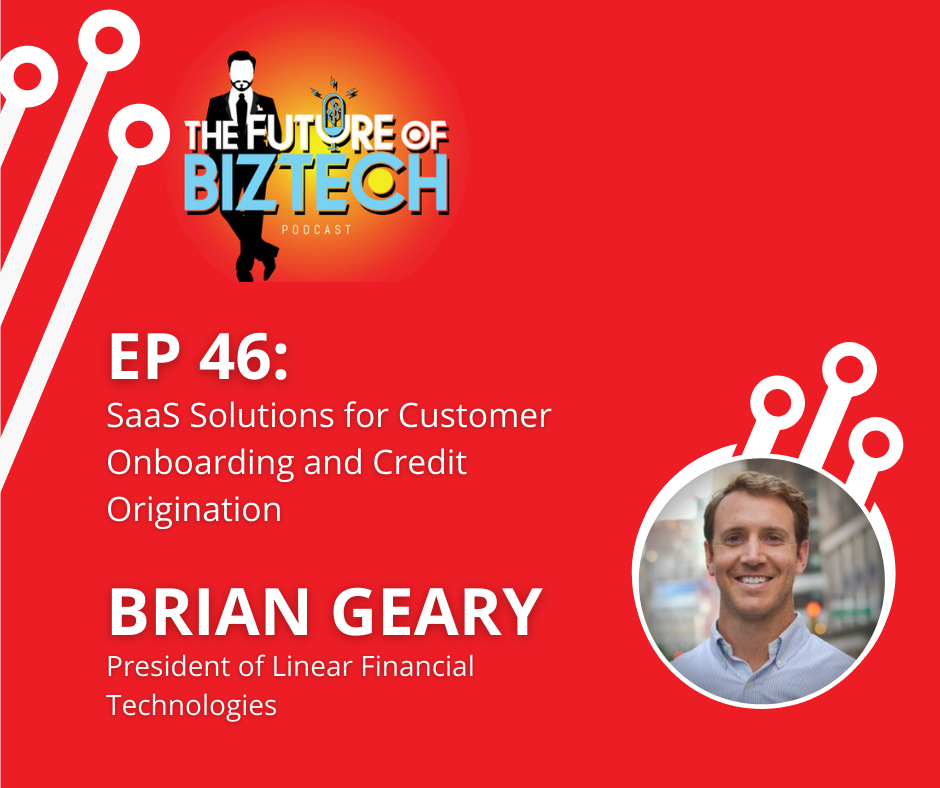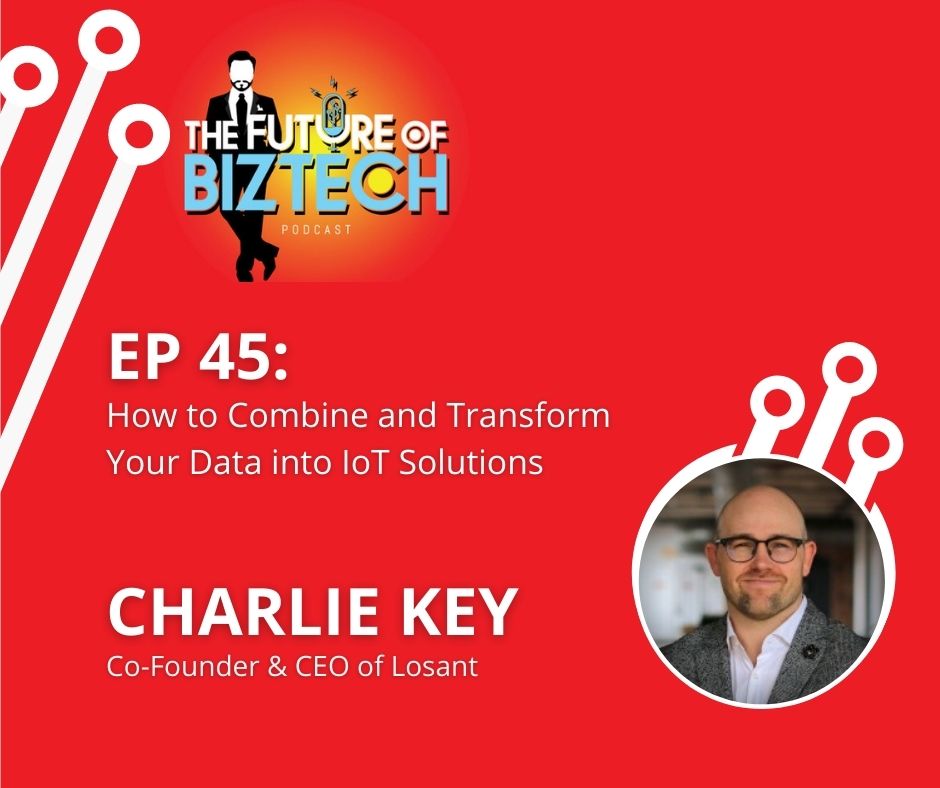Learn more about Prometheus at: https://prometheusalts.com/
Find Michael Wang on LinkedIn here: https://www.linkedin.com/in/michaelytwang/
JC: Welcome, everyone to another episode of The Future of BizTech. I’m your host, JC Granger. And I have another fantastic guest on the show with me today. If you end up loving this episode, please show your love and appreciation by following this podcast wherever you’re listening, and be sure to give it five stars, preferably with a comment or two in there, it’s always helps with the algorithms, because that is how other techies like you and I can find podcasts like this. And today I have the absolute pleasure of interviewing Michael Wang, the founder and CEO of Prometheus. Michael, thank you so much for coming on the show. Why don’t you tell the audience a little bit about yourself? And what is Prometheus? Alternative investments do?
Michael: Sure, absolutely. So on myself really quickly. I started off as investment banker doing M&A at Citigroup. And most of my career has been on Wall Street. So after city, I joined a large hedge fund called SAC Capital worked for Stevie Cohen. So for those viewers out there, who don’t know what hedge fund is, there is a show called billions on Showtime. That’s actually based on the actual manager and fun I used to work for..
JC: The old Axe capital?
Michael: The real Axe capital, the fact the logo, I love carbon copy of the original SEC capital. The office is a carbon copy of the actual office that they have in Stamford, Connecticut.
JC: Well, now I have to go look online, I gotta find that. I love that show
Michael: So I work for CVX code for about five years and help grow one of the larger portfolios there. And then in 2012, I left SAC to join a join a guy named Jason Karpen, launching a hedge fund called turbulent capital is a global long short equity fund group that a couple billion dollars. Now this was on the east coast of New York, I moved from New York to LA, where I’m currently back in 2015, to take over the oldest hedge fund still in existence called Cyprus. So I was running Cyprus for about five years with my partner, Robert De, and who was the founder down in 1969, by the way, and after I was running Cyprus, I decided, you know, I’m gonna leave the fund management industry to pursue this idea that I have for quite some time to essentially democratize access to hedge funds, venture funds, private equity, etc. And that just give people access to a great asset class they’ve never had access to before, but also educate people on essentially financial literacy. So in a nutshell, what Prometheus is, it’s a social marketplace for alternative funds, they break that down really quickly into pieces in the marketplace from it, think of it almost like Robin Hood bed stuff coming here to buy and sell stocks, you’re shopping for hedge funds, venture funds, crypto funds, private equity, etc. And then how the social piece fits into the equation is that it serves as a safe and professional platform for these managers on Wall Street to actually feel comfortable posting content, because most managers on Wall Street, don’t post on Twitter, Tiktok, Facebook, etc. But they’re posting on Prometheus, and they’re posting in Prometheus right now. So it’s the only place that you could go to, to get real time insights and to interact directly with some of the best investors in the world. So they get the social part is Twitter, but with pros on Wall Street.
JC: Interesting. So now, does Prometheus offer the ability for you know, smaller investors? And by the way are these are these individual people are these licensed people that are on the app?
Michael: Individual people, anybody can join Prometheus, whether you are what’s called a credit investor or not. And so anybody could get access to the social and start learning and engaging directly with some of these professional managers get their real time insights in the markets. However, because of regulations, and very archaic regulatory laws, from warthog on 1933 and 1914, the marketplace right now is only available to accredited investors and above. So what’s the definition of a credit investor, it’s somebody who makes over 200 grand a year if they’re single, for instance, or has million dollar net worth or above so but what we want to do is we want to break down those barriers for folks to build access this product because it makes no sense to us that anybody can go to casino, gamble their money way anybody can lever up and buy whatever, you know, doge coin or whatever coin that they want to, but they can’t invest in a low volatility, uncorrelated hedge fund that consistently generates, you know, low double digit returns makes absolutely no sense for us. So we have to change these laws we’re going to evangelists for breaking down these laws. And but there are other things that we’re working on right now. Which will allow even on a credit investors to be able to participate in our marketplace. So stay tuned.
JC: Got it, so you have the social side for the unaccredited. And to be like you said to be an accredited investor, it’s really just about net worth. It’s not a license or anything like that?
Michael: There is a few different I guess, thresholds that you could meet on qualify to be an accredited investors. So there’s the income thresholds, that’s to only pay above there’s net worth threshold, which is a million dollars and above. And then most recently, though, and this is why do you think the SEC is sort of headed in the right direction is is that they allow you to be deemed accredited, even if you don’t meet the income, or the net worth threshold. If you’ve passed the series seven, I think the series 63, so you can get licensed and become accredited without meeting any of the income or net worth thresholds. So that’s a relatively new thing.
JC: Okay, let’s go backwards for a little second here. And we’ll come back to this because I want to I want to hear specifically later on, if there’s any advantages, or any cool features that licensed individuals can do within your platform, or if that’s coming, but for now, I want to know, why did you start this right? Like, I hear that you don’t like the laws? A lot of people start things because you get frustrated with something right? And you’re like, What sense does this make Why can’t you know you want to get in on this? But you know, what’s, what’s your villain origin story? When it comes to the day, you said, I’m leaving, I’m gonna keep calling it Axe cap. I just love this show so much. I’m leaving x cap. I’m going to LA and um, start this off where like, what what was that moment? Like? Why Why make that move? What what was really that tipping point for you?
Michael: I always viewed myself as a white knight, not a villain, but I’ll take villain for today. So why did I start this thing? It’s a phenomenal question. It’s because I was a manager for 15 years before I started this thing on Wall Street. And there were just a lot of friction points and a lot of problems. A very apparent for me, you know, being an operator in the industry that I wanted to address that nobody else was addressing. So for instance, to give you an instance of how tech archaic our industry is, if you want to invest in a private equity fund, or a venture fund or hedge fund today, you got to fill out 100 Page subscription document structure by hand manually, oh, geez, if you want to, let’s say you want to invest in two separate funds, well, you’re essentially fill out the same information twice. Right? We’re in 2022 here. We have to automate this. So that’s just even a single example of how tech archaic the industry is. And I wanted to modernize the industry. Okay. And at the same point in time, you know, one of the things that was occurring during the pandemic was, Robin Hood became really popular, investing in the public equities markets, investing in general became culturally relevant, that where was the retail population going for their investment insights? They’re going to read it, you know, they’re doing this course they’re going to start with they’re going to Twitter, in which case, what are they doing, they’re sourcing investment advice. From other 19 year old kids who probably have no experience, have no idea what they’re talking about. I found that quite a bit dangerous. And quite frankly, you know, a lot of traders have learned the hard way over the past year, having lost a lot of money, probably trying to trade in these markets by taking insights about investing from people weren’t qualified to give those insights. And so I wanted to build a platform where users can come to, to learn financial literacy to learn the right way how to invest, and how to speculate that how to invest directly from the pros, there ain’t no better way to learn about investing from a practitioner, a professional who’s done this for many, many years, I wanted to give that to people. And then obviously, what I touched upon earlier, as well as giving people access to these great wealth, creating products, that was only previously in the purview of the ultra wealthy and the largest institutions, right. I want to make it available to doctors, lawyers, engineers, you know, these are all there’s a lot of credit people that don’t have access to this asset class.
JC: So is is there a b2b aspect to your software? For example, do you have anything in your in your system that you partner with companies with large amounts of employees, for example, where you can bring them on and then they their employees can benefit? Is there? Is there anything you I know you weren’t allowed to direct people but is there any any b2b aspect here that angle?
Michael: Absolutely, because our audience is twofold on the demand side, right? So what we were just talking about is certainly the retail community high net worth individuals, doctors, lawyers, etc. But then the other market that we’re actually also tackling on the demand side arm, you know, institutions, particularly RIAs, registered investment advisors, there’s 20,000 RIAs here in the US, and on average, they only have about 3% of their clients assets in alternatives. And it’s not because they don’t want 30, 40, 50% of their clients assets and alternatives. It’s because the average ra running $50 million in Wichita, Kansas has no ability to access the latest hedge fund venture fund etc. Right. So we wanted to build this platform to accommodate For those RAS as well, and maybe family offices, etc, then give them a place where they could discover managers, diligence and managers, one, please get to know them through the content that they’re posting, and finally be able to transact on the platform. In addition to that, on the supply side, so who’s our supply, our supply products or managers or hedge fund managers, private equity managers, venture managers, crypto managers, etc. Well, those are our suppliers with contracts with them, we give them essentially an external investor relations portal, where they can house all their content, all of their documents from marketing materials, investor letters, to their subscription documents, all in one place. Because what’s occurring right now is if you’re a fund manager, most fund managers actually also the investor relations person, you know, and if you meet with a prospective investor, let’s say I’m a fund manager, I met you, what would I do after the meeting, I would send you an email with seven different attachments, my marketing deck, my investor letters, my subscription docs, etc. And after every time I meet with a new investor, when so doing that at Prometheus, we could house all their documents so that the investor that you could just go straight to Prometheus and access all the information in one place.
JC: Okay, now talk to me about so you say alternative investments? Are we talking like meme stocks? Are we talking startups? I mean, what, what is how do you define alternative investments?
Michael: Yeah, the way I like to define alternatives is, it’s anything that’s not traditional. So what is traditional, then? It’s stocks, bonds, and cash. Okay, so what’s in the umbrella of alternatives is very vast. It’s everything from hedge funds, venture funds, crypto funds, real estate funds, all the way down to artwork, to collectibles, buying and selling comic books, you know, paintings, you know, cars,
JC
What about NFts? Are NFTs in that somehow?
Michael: Yes, they’re also they would also be considered alternative as well. And so what we’re focused on, though, is we are focused on funds. So we’re not the place to go to if you want to invest in somebody’s startup, okay? Or an entrepreneur startup or whatnot, you could go to Angel List, you could go Republic for that type of stuff. You come here, to invest in funds and fund managers that are picking the startups, for instance. And because I believe that most people in the world, they’re not investors, the doctors, lawyers, or engineers, etc. And it’s okay to have your own Robin Hood account, it’s okay to have your angel list account to dabble yourself. But heck, if you’re a lawyer, you know, in the courtroom all day long, you’re best served putting most of your capital with the Treasury manager that you’ve gotten to know and Prometheus.
JC: And are they are they categorized? Like I mean, like if I want to find a hedge fund manager that just does you know, green energy, for example, or or someone who just invest in NFTS or things like that, am I able to find those specific types in there?
Michael: Absolutely. They are all categorized. In fact, we have tags for each fun on our platform as well, through looking for a low volatility hedge fund that doesn’t correlate with the broader equities markets. Okay, here are the three funds on our platform that do that, oh, you’re looking for somebody who trades in crypto, here’s a fund that does that, you know, you’re looking for a venture fund that focuses on plant-based investing something that’s specific to that which we actually have one mitre ventures on our platform. We have that. So we allow you to build filter and search for funds on our platform,
JC: Does it show their success rate? Can you look and see how well they’ve been doing with their font?
Michael: Yes. We want what we want to provide any investor and Prometheus is ability to do your full end to end diligence on our platform, which includes everything from performance, which is what you’re alluding to, to their investment process, to the history of each of the managers as well.
JC: That’s interesting, because I wonder, you know, do you have when you have an access point like that, like your system, and you have access, like you said, it’s fund managers specify, specifically because people can pick ones that go in certain directions, my brain goes to like city and county funds, where there’s a political aspect, right? You might have a county that has or some governor of a state or a mayor of a city that has said we, you know, we want to we want to go green energy, for example, and approve that, you know, we’re putting our union funds or whatever, into XYZ company, and they could find that manager on your platform, I imagine. Right? So I mean, are you seeing that? Are you seeing either large, like unions or government entity funds, you know, retirement funds, things like that, you know, using your site and your system to find the places not only were to put their money, but also places where maybe they can feel good about putting their money there, for example.
Michael: So I’ll address this question a couple ways. Number one, just to be clear, our platform right now, it’s still invite only, in fact, we only launched it invite only about a month and a half ago, you know, but your question is an important one is what am I seeing in the broader sort of investment community for these different funds? And it’s not just municipalities or cities or governments or whatnot. It’s also there’s just a lot of folks that over the last few years have felt the need to okay, hey, is there a way that I could feel good about capitalism? But also, can you have a country positively to the world, right. And so there has been a shift in demand in quite a bit of demand for these ESG funds for an environmentally friendly funds for funds that only invest in you know, like carbon neutral companies like a Tesla or something like that. So there certainly is a drive in the industry, from individuals and corporates and governments alike, to head into this direction. And by the way, we actually have funds on our platform that donate one particular fund donates half of their profits to charity. Wow, you’ll definitely think about a hedge fund manager like Bobby or as being particularly, you know, charitable like that. But you know, that you’re sure to see a lot of that stuff pop up in the old world where these managers they want to get back.
JC: Yeah, that’s interesting. And that’s a good thing. Right? It’s great that that’s coming up. All right, well, it wouldn’t be The Future of BizTech, if I didn’t ask the futuristic question here. So let’s start with your company, you’re obviously very new on the market. What do you got coming down the pipeline? You know, what kind of roadmap can the users be? Looking forward to as far as options and things they’re gonna be able to do here in the future on your system? Yes, sure.
Michael: We’ll talk about perhaps a couple of different features on our near term roadmap. And I could also talk about, you know, longer term stuff as well. So in the short term, a couple of things. One is we talked about how much friction there is to invest in an alts fund today, having a photo 100 Page subscription document, have completed building the software, and we’re integrating into our platform over the course of the next that’s called a month or two, in ability to basically almost do one click Checkout, to invest in an alts fund. So what we do is this the first time you come on Prometheus to invest in any fund, we make you fill out the Prometheus subscription document, okay, think of that, as a master set up, we say that information and create an investor passport around each user. And then what we do is every future transaction you want to make as an investor on the platform, well, we use, we auto populate every other set back and forth, that all you have to do is Docusign and wire the money, you know, was getting as close to one click Checkout as possible, making it as frictionless as possible, that is coming to our platform over the course of the next month or two. In addition to that, there’s a lot of really cool stuff on a roadmap that we really want to build in. So for instance, groups, the ability for a financial content creator, to start a group chat, for instance, on our platform, and make it a paid group to monetize your audience. So there’s a lot of these 1000s of financial content creators that write newsletters on substack or have podcasts, you know, etc. And they want to monetize their audience in a chat room, they will be able to do that on Prometheus, you know, in charge 15 bucks a month, or 20 bucks a month, whatever it is that they want, you know, so those are a couple..
JC: Like a creator subscription content
Michael: Exactly in a chat room with, hey, you know, maybe your fund manager or retired fund manager, let’s call it, you know, and you’re still trading with your own capital, you put out a lot of content and you want to monetize your audience. Well, this is where allowing your audience to come to a daily chat room with you where you’re giving them your real time, thoughts on the markets. And, and to be able to, you know, obviously charge a subscription fee for that. So that’s a couple of sort of large items on our roadmap over the near term, but longer term, you know, what is our goal for the company? Well, we want to be that central place, where everybody whether you’re an individual or institution to go to to access all of your alternative investments, you know, simple plain, end of story, right? Be the Amazon essentially of alternatives. And then at some point in time, be that central place where you go to to get insights directly from the pros, credible insights about investing about the markets. First place you go to is Prometheus. Yeah, you don’t go to stock twits or Twitter or any of that stuff. You come at Prometheus. So that’s sort of our longer term goal.
JC: But where do you see just your industry going in the next five or 10 years, whether it be, you know, technology wise legislation The wise right, you know, a lot different shifting political winds, culturally, you know, where do you see just you and all your competitors that are doing something similar going to be in the next five to 10 years?
Michael: Sure. I think number one, there is a lot of demand from retail and broader retail community to get exposure to alternatives, just to give you a frame of reference, if you’re a billionaire family office, typically you have that’s quite 40% of your assets in alternatives already, you know, because they’ve had access alternatives to the ultra wealthy, etc. The typical doctor, lawyer, retail person has close to 0% of their assets in alternatives. And so I do believe that over the course of the not just the next few years, but over the course of the next three decades, you’re going to see that shift from traditional investments within a retail portfolio to alternatives. And that’s going to grow from 0%, close to 0%. What is today to something above that it’s 10, 15, 20, 30%. And that’s a mix shift of trillions of dollars. And we want to be at the center of that, obviously, you know, but in order for that to also happen in a big way, you do need some changes in the legislation. So that’s one thing that you mentioned there. And I do believe that at least the SEC, given that they allow somebody to be credit to be able to invest in alternative products, if they passed some of these license tests. I do believe they’re probably headed in the right direction. And I’d like to see more though, like why do we even have this $200,000 threshold? or million dollar net worth threshold? What Why do we even need that there? At the very least take it down to something a lot lower? Right? Or, you know, better yet, just eliminate that standard altogether? And because these laws, just so you know, we’re talking about the Securities Act of 1933. And 1940. I mean, FDR was President, you know, when these laws were enacted, like the biggest invention was scotch tape, things have changed in the last 80 years.
JC: I still use scotch tape, I don’t know.
Michael: I’ve nothing againts Scotch tape. And but the point of matter is, is that a lot of things have changed, technology has changed. You know, the reason why these laws were put in place was due to what happened during the Depression. Like, you know, we’re in a different stage. And we’re in a different era right now. So the laws need to change. And from a technological standpoint, I do believe that our industry today, I like to say is equivalent to brick and mortar retail of 20 years ago. You know, if you believe in technology and advancements, then everybody’s got all the funds, all the people they’re going to be in Prometheus, right to build transact frictionless. And, and that’s what we offer, you know, we built the tools to be able to process these transactions frictionless. So I do believe that companies like ours, will do a lot in removing all different frictions, all different barrier points for people to be able to access alternative products.
JC: Perfect. I have one question left for you. Completely unrelated, in a way. What did you want to be as a kid? And then and it is this it? And if not, how did it get to this?
Michael: Yeah, so what I want to do is get almost like shifted, depending on the age, but certainly in middle school, what was I doing a lot I was doing two things. So I was playing a lot of video games. So particularly a game called Duke Nukem 3d. ,
JC: I remember Duke Nukem.
Michael: And actually I used to I used to compete. And you know, and I think at one point, I was ranked like 11th in the world or something.
JC: No kidding?
Michael: I’m a total nerd obviously. The other thing I used to do a lot with skateboard. And so I either wanted to be a professional , which nowadays, that’s actually respectable profession, you can actually make a lot of money just asking Kinja, you know, back then not very respectable. And certainly my parents did not want me to go in that direction. And then skateboarding, I just love skateboarding. I would skate for like four hours a day, and doing tricks and stairs and railways and all that type of stuff. But listen, I wasn’t good enough, by any means to become a professional at that, you know? So how did I shift from those sort of more personal interests to investing? Well, it’s actually because my parents were immigrants from Taiwan. And when we came to America, we didn’t have much money. And it was actually through investing my parents teaching themselves how to invest in the markets, how to invest in real estate and stuff like that, that they realize the American dream. So I grew up, you know, watching my parents wake up early in the morning to trade stocks, you know, and so I was exposed to a very early age, and maybe in the back of my head, subconsciously, it was alright, ultimately, I’m going to do this. Maybe I’ll be a bit rebellious or trying to do skateboarding or stuff like that beforehand. And so it was always an interest of mine. And you know, in high school, I was trading and I was the president Investment Club and doing all that stuff. So it was, it was probably going to happen, I was always interested in in plus I grew up exposed to investing at a very early age.
JC: Very cool. Now you didn’t mention that it’s invite only, right?
Michael: It is invite only right now. However, for listeners of your show, I want to get an access today. So use the code bird B-I-R-D, to get to create a free account, this entire platform is free. And go to Prometheus Altstadt comm to Axios or Google Prometheus in the Apple App Store. And you could do that there too.
JC: Awesome. And how can people reach you maybe personally if they need to a way of kind of high level talks or deals?
Michael: Sure, you can visit me on my instagram, it’s Mike_Prometheus. And so you can reach me there, you can reach me on LinkedIn as well search for Michael Wayne Prometheus, and you’ll find me there as well. So, and also, we have our own direct message platform on Prometheus. So get on Prometheus, direct message me, I always reply.
JC: Very cool. I’m for everyone listening out there. Again, if you liked what you heard today, be sure to subscribe to this podcast, get a five star rating with some comments behind it. So other techies like us can find it and enjoy learning about all these amazing and helpful b2b software’s and on the market today. Again, Michael, thank you so much for being on the show with us today. And I am going to check it out. I think it’s really cool. And, and I’m gonna like I said, I’m gonna be doing some research on the old company. And I’m gonna start looking at images on Google to see how it compares to Axe capital and you..
Michael: If you want some that was your age. I have those two. We could do that over a beer. So I’m probably..
JC: Oh yeah, I’ll take that. I’ll take you up on that. Awesome. Thanks for being on the show. Michael. Have a good one.
